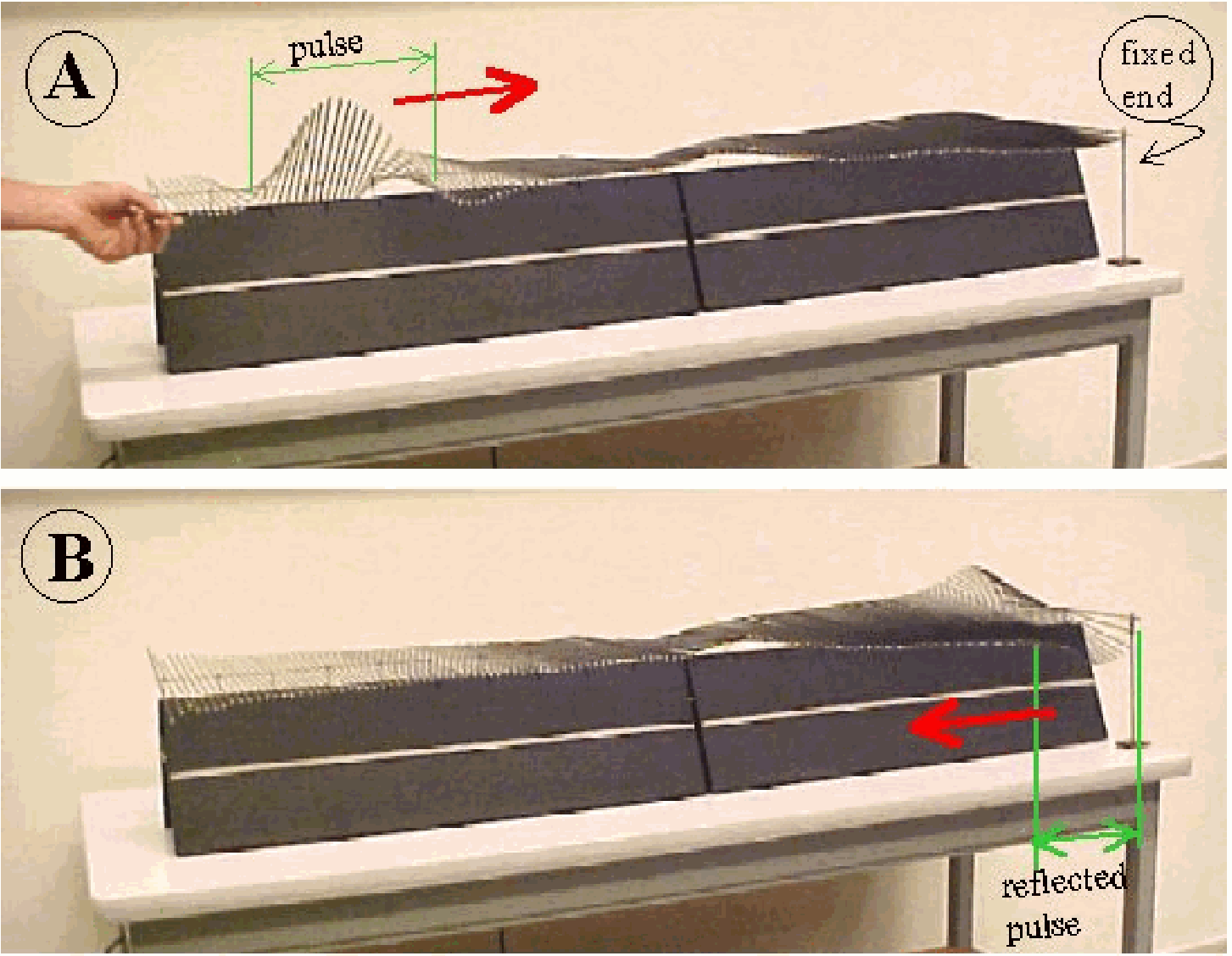04 Speed of a Single Pulse on Different Strings (1)#
Aim#
To show that a transverse pulse moves two times slower on a four times heavier rope.
Subjects#
3B10 (Transverse Pulses and Waves)
Diagram#

Fig. 340 .#
Equipment#
Piece of rope ( \(l=8 \mathrm{~m}\) ).
Piece of fourfolded rope \((\mid=8 m)\).
Two pulleys.
Two masses of \(1 \mathrm{~kg}\).
Clamping material.
Camera.
Projector
Presentation#
The demonstration is set up as shown in Diagram and Figure 341.

Fig. 341 .#
Using a ruler, the instructor gives a sharp blow on the four-folded piece of rope: A crest travels fast along the rope, continuously reflecting at its fixed ends. The same is done on the single rope. Here the crest travels much faster (also its crest-inversion at reflection is clearly visible).
When demonstrating the four-folded rope, you can use your voice as a stable timekeeper: just “pom-pom-pom-…” on the time it takes a crest to travel away from you to the end of the rope where the weight is hanging. You keep this rhythm when you demonstrate the single rope. It will be clearly visible that on that same rhythm the crest travels now away and back to you: it makes a complete run. This shows that on the single rope the crest travels twice as fast as on the four-folded one.
Explanation#
The velocity of a wave along a rope is \(v=\sqrt{\frac{T}{\mu}}, T\) being the tension in the rope and \(\mu\) its mass per unit length. Both parts have the same tension (both are loaded with \(1 \mathrm{~kg}\) ), so the difference in the velocity of propagation is explained by the difference in \(\mu\). \(\mu\) being four times higher in the fourfolded rope makes \(\nu\) two times lower.
Remarks#
As presented in the picture of the Diagram, to the audience it is hard for them to see the crest traveling along the rope. Observation along the rope presents a much better view. We use the camera in such a position to make the traveling crest clearly visible (see Figure 341 and Diagram).
The “sharp blow” should be given horizontally.
Sources#
Mansfield, M and O’Sullivan, C., Understanding physics, pag. 344-345.
Young, H.D. and Freeman, R.A., University Physics, pag. 600-605.
Giancoli, D.G., Physics for scientists and engineers with modern physics, pag. 392.
Jewett, J.W. and Serway, R.A., Physics for Scientists and Engineers with Modern Physics (seventh edition), pg 461-462.
